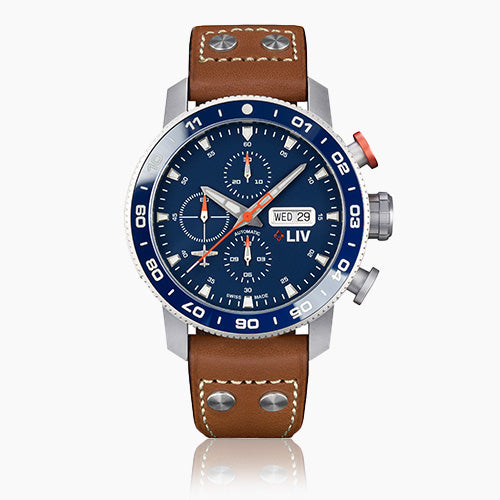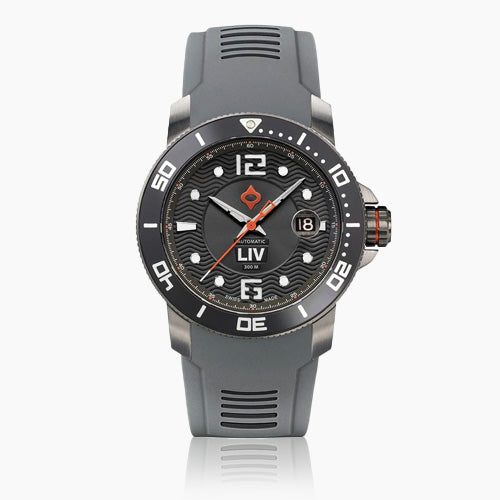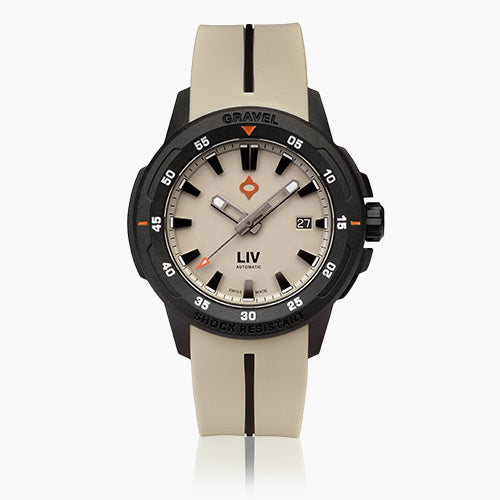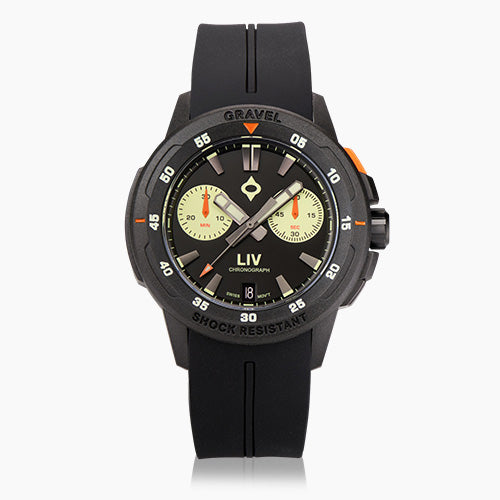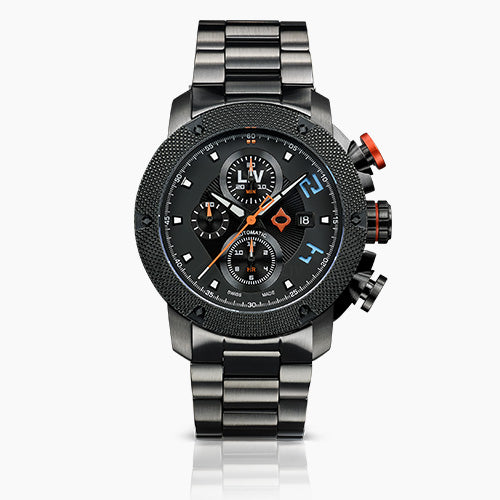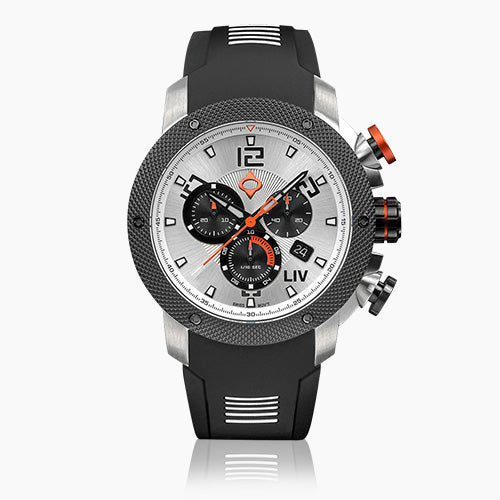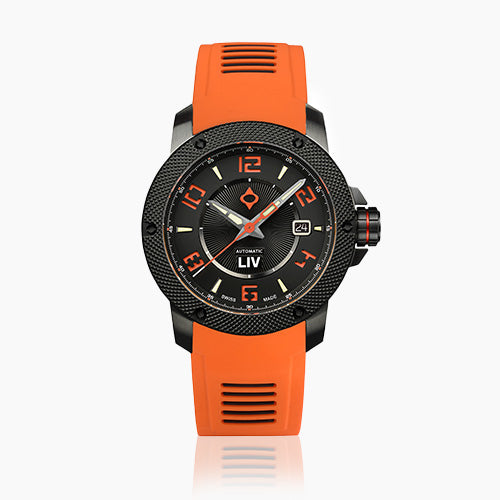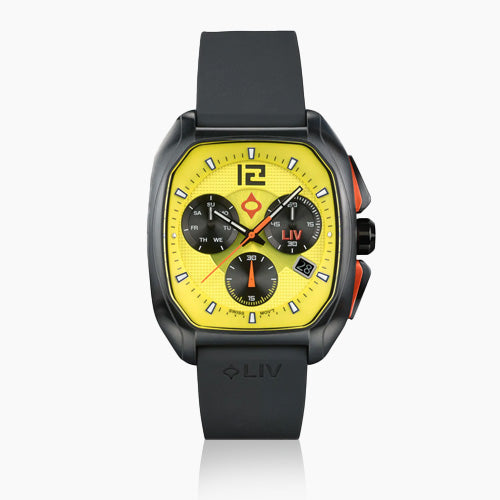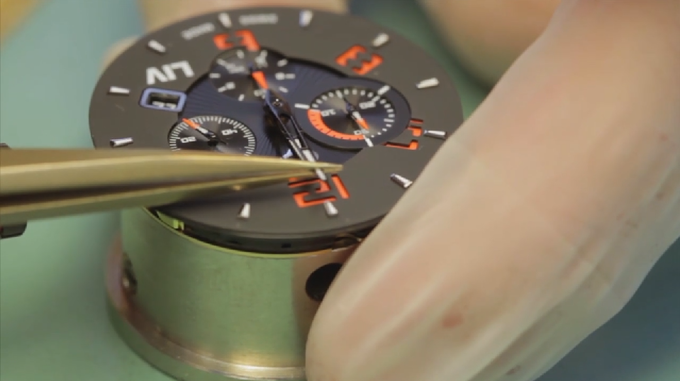
What makes a LIV watch? Part 4: The construction process
Share
THIS ONE IS ALL ABOUT HOW A LIV WATCH IS CONSTRUCTED
The third article in our five-part series on ‘What Makes a LIV Watch?’ looked at the design process for a LIV watch. Before that, the first two articles looked at the roots of our brand’s inspiration, as well as the decision-making processes that need to be considered before a watch can even be designed, let alone manufactured. Well, now it’s time to turn to the manufacturing process in this, the fourth article in our series.
This article will provide you with a step-by-step overview about what goes into building a watch from beginning to end, i.e., from post-design to packed and ready at pre-sale. This might appeal most to the ‘techie’ guys among us, without boring the rest of you out there! Let’s go for it.

THE PRE-CONSTRUCTION PHASE
Clearly, the construction of a watch doesn’t occur out of thin air and in a vacuum. There are various stages to a build, of which the pre-construction stage is a very important one. The build will obviously be done based on technical drawings (simplified variations of which can be seen in our user manuals). There are two types of technical drawings:
- The main technical drawing: this includes the caseconstruction; the dial construction, the hands, and all the other different elements required for the watch.
- The dial technical drawing: as the name denotes, this drawing precisely specifies all the elements that will be on the dial, including the indexes, sub-dials, if applicable, and so forth.

THE SWISS PROTOTYPE STAGE
All materials needed for a LIV watch are shipped to our assembly team in Switzerland. They have a rigid system in place for the first stage on their side, which is to produce a first prototype based on all the approved components. Being Swiss, you can imagine that this all runs like…well, clockwork! This stage by our assembly team includes a thorough quality assurance (QA) process (and, boy, are they thorough!) to ensure that all parts needed for the watch are exactly according to our specification (‘to spec’).
If any part is not according to our specification, then this assembly team will call the relevant supplier to query the non-conformance and get it rectified. Just this QA component assurance step alone is why the assembly people are so important to us as the client.
Once everything is compliant, then the assembly team in Switzerland will do a First-Step Prototype with all the components needed for the intended watch model.
The team will once again do a complete QA check on every single component of the prototype.
The Swiss assembly team will then send a sample range of this prototype to the LIV team in Miami.
We then thoroughly check this first round of samples sent from Switzerland in order to check that the design is 100% okay and in exact accordance with the aforementioned specification for the model.
If all is exactly in order, then the prototype is approved by us and the Swiss assembly duly informed that they may proceed with the build.

THE SWISS ASSEMBLY STAGES
It’s worth noting that LIV Watches sometimes uses two types of assemblies. There are assembly providers who focus only on the assembly of all pre-fabricated components (to specification, of course), as well as movement makers that focus only on the assembly of movements.
It is now the time to do the full assembly of all components of a given watch, i.e., the casing up of watches. This is what is commonly known as the watch assembly stage, or T2 production.
The sub-contracted Swiss assembly team commences with what is known as a ‘soft production’ run. This is a limited production of a given watch; say, for example, the first 25 models of a 500-model collection.
Once produced, these models go through yet another thorough QA check. This is done to once again verify that everything in the watch has been produced according to the specification. The fit, the finish, tolerances, and colors of the watch are the main factors that are keenly checked by the assembly team in this specific QA test.
Only once the initial run has been QA tested and approved, can the watch then go into full production.
There are QA checks at every step of the way, such as the 20% Spot Test on pre-assembly and then a full 100% test on all watches post-assembly by the QA team. This is done with a microscope for each and every tested watch.
There are also ongoing quality checks during the assembly process itself. The assembly process will have included the careful placement of the movement and watch dial in the case, as well as the cleaning of watch glasses (crystals) with compressed air and a hand vacuum before final casing and/or finishing.
Only then does a specialized machine check the water resistance of the watch, which, as you probably know, is one of the selling features that most appeals to some watch lovers. The machine achieves this without having to immerse the watch in actual water. These machines are highly accurate and they’re quite something to see in action, according to Chaz.
The completed production run is signed off and shipped from Switzerland to our headquarters in Miami.

DUST, THE ALMIGHTY FOE
It’s worth making mention here of that primary foe of any watch assembly workplace, namely dust. People don’t realize the importance of dust in the watch manufacturing process. Dust or grit can play havoc inside a watch movement, particularly to its jewels or its myriad moving parts, such as the various springs, wheels, pinions, ratchets, and plates that comprise this mechanism. Therefore, every step of the watch assembly process (i.e., the actual watch build) needs to occur in a completely dust-free environment. You need a quintessentially sterile environment.
It’s exactly the same environment as one needs when assembling hyper-sensitive components in the semiconductor and technical component industries. Imagine assembly workers wearing hair nets and pristine white laboratory coats, and you get the picture. Any well-rated assembly facility will ensure that all components received on our behalf are unpacked and placed in individual storage and internal transport containers. This is done to protect said components from dust.

Hence, a high-end watch assembly facility with top-of-the-range dust controls in place is both incredibly expensive and technically complex to build and maintain. That’s why we, like most watchmakers, rely on highly specialized watch assembly facilities and professionals to do our watch builds.
THE POST-ASSEMBLY STAGE
Once received from Switzerland, every one of the watches at LIV Watches in Miami goes through a further QA, not once, but twice:
- In-bound QA: this is done to double-check that every watch was properly assembled and that all components were done to specification at the assembly phase in Switzerland. This may include a movement check if it’s an automatic watch, as well as a thorough visual check for all watches.
- Out-bound QA: this is another thorough visual test before a watch is shipped out to a fan.
Esti Chazanow, Co-Founder at LIV Watches
Esti's passion for men's watches led her to co-found LIV Watches—a microbrand dedicated to connecting watch collectors with high quality, limited edition, Swiss Made timepieces at prices they can afford—and the rest is horological history.
